Books by Hanna Vertiienko
К. : Інститут сходознавства ім. А. Ю. Кримського НАН України, Видавець Олег Філюк, 2015. – 224 с.... more К. : Інститут сходознавства ім. А. Ю. Кримського НАН України, Видавець Олег Філюк, 2015. – 224 с.
У монографії відтворено ідеологічну модель скіфського танатологічного міфу, що відповідає загальноіранському. З’ясовано природу базової міфологічної моделі Інобуття та есхатологічних уявлень щодо посмертної долі у світоглядній системі іраномовних номадів. На підставі здобутих результатів подано нову семантичну інтерпретацію низки витворів «елліно-скіфської» торевтики IV ст. до н. е., зокрема сахнівської пластини, пекторалі з Товстої Могили та інших.
Розраховано на істориків-сходознавців, релігієзнавців, культурологів, археологів, аспірантів гуманітарних спеціальностей та всіх, хто цікавиться історією та релігією кочового населення Євразійського степу.
Papers by Hanna Vertiienko
Arheologia, 2025
The term σάγαρις is analysed in the article. This word was used in Classical sources to designate... more The term σάγαρις is analysed in the article. This word was used in Classical sources to designate a specific Scythian weapon — a battle-axe. The lexical history of the word, its meaning and translation, as well as the ways of representation of Scythian battle-axes in ancient art and their archaeological realities are discussed.

Shìdnij svìt, 2024
A small number of Avestan manuscripts with an illuminative component are known. Among t... more A small number of Avestan manuscripts with an illuminative component are known. Among the illustrated Iranian documents, there are manuscripts containing simple and small illustrative motifs included into the text. The article focuses on the analysis of illustrations of fragards 10 and 11 of Wīdēwdād in ms. 4000 (University of Tehran No. 11263). This document is the oldest Iranian liturgical manuscript with illustrations and dates to 1607/1627. According to the author, the main reason for the appearance of these textual illustrations at this time was the cultural life during the Safavid Dynasty (1501–1722). Its reign was characterized as a revival of the old Iranian traditions when Iranian artists had more freedom to paint humans and animals, flowers and plants on decorative carpets and tiles. The types of illustrations in ms. 4000 are considered in the article. The author draws attention to the pictorial motif known as “Lady Sun” (Khorshid Khanum), which was used as a decorative element on carpets and Bakhtiari talismans that were hanging on the walls on weddings and to protect against the “evil eye”. The iconography of the “Lady Sun” and the image of the “female guise” from among the illustrations of fragards 10 and 11 of Wīdēwdād in ms. 4000 have many similar features. Probably this suggests common iconographic roots of these motifs, which reflect certain aspects of Iranian culture associated with apotropaic ideas.
Iranica Antiqua, 2023
A unique ornithomorphic image of the 'rooster-man' on the gold plate of gorytos from Soboleva Moh... more A unique ornithomorphic image of the 'rooster-man' on the gold plate of gorytos from Soboleva Mohyla burial mound (4th century BC) is discussed in the article. The author proposes the identification of this deity as an archaic figure of the ancient Iranian rooster-god that has some similarities with the Zoroastrian deity Sraoša.

Shìdnij svìt, 2022
The paper provides an analysis of the iconography and semantics of two ancient Egyptian amulets-p... more The paper provides an analysis of the iconography and semantics of two ancient Egyptian amulets-pendants made of “Egyptian faience” found in the Scythian female burial No. 1 of mound No. 8 of the Pisochynsky burial ground (Kharkiv region). The burial dates to the end of the 4th century BC. Currently, these objects are stored in the basement of the M. F. Sumtsov Kharkiv Historical Museum (inv. nos. M-2759 and M-2760). Faience amulets were suspended from earrings in the form of a ring made of gold wire. They made up a single ensemble of the headdress of the buried woman, together with a rich headdress decorated with gold plates. Amulets have different sizes and differences in style, but schematically depict the same zoomorphic creature. This is a picture of a pig. In ancient Egypt, amulets in the shape of a pig did not become widespread and are known from finds of the New Kingdom and the Late Period. In the Late Period, one of the centers of their production was the Greek settlement of Naukratis, which produced various products from “Egyptian faience” for export. They are known both in the Mediterranean and Black Sea regions. Despite considerable sketchiness, the amulets from the Pisochynsky burial ground can be reliably identified precisely as the image of a pig, which is proved by comparison with the amulet inv. no. AN1896-1908-EA.889, Oxford, Ashmolean Museum. The authors believe that the population of Forest-Steppe and Steppe Scythia did not know the authentic meaning of these and similar Egyptian amulets. They could be perceived as images of the Otherworld creatures, which, firstly, introduced them into the circle of priestly attributes, and secondly, gave them a meditative function in the funeral rite.
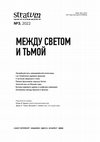
Stratum Plus., 2022
The motive of the gods/deceased sitting on the golden “places/thrones” in the Otherworld in belie... more The motive of the gods/deceased sitting on the golden “places/thrones” in the Otherworld in beliefs of the Iranian-speaking peoples of antiquity is considered. It has preserved in three Avestan sources: Videvdat 19; Aogemadaeca §12 and Yasht 15. In Iranian vocabulary to designate the “throne” are used such words: OP. gāθu- (perhaps, this meaning is acquired from the Akkadian equivalent kussû); Av. gātu- (with second meaning “place”); MP and NP gāh. Middle Persian sources indicate the peculiarity of the sphere of dwelling of the celestials and righteous people created by Ahuramazda is participation in the light. The souls of the righteous who have reached Garodman join the golden environment and sit on the thrones made of gold; they are dressed in gold and shine from within. The lower world of Ahriman and sinners is completely filled with darkness. In the Ossetian tradition, the image of goddess of the Underworld, sitting on the “golden chair”, as well as a golden-haired young man who meets the deceased, has preserved. This goddess is a reminiscence of the Sarmatian-Alan and Scythian representations. For the Iranian-speaking nomads, an important element of integration into the Afterlife world was the motive of the posthumous infernal (equestrian) journey. Before reaching the Afterlife, the soul of the deceased had to overcome the path through the space of the Otherworld darkness. Possibly, gold was used as a “source of light” in this path, namely, gold objects of burial assemblage, such as sewn appliqués for clothes and headdresses, and elements of horse equipment.
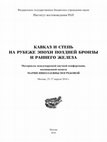
Кавказ и степь на рубеже эпохи поздней бронзы и раннего железа. Материалы международной научной конференции, посвященной памяти Марии Николаевны Погребовой, Москва, 25–27 апреля 2016 г. / отв. ред. А. С. Балахванцев, С. В. Кулланда., 2016
The Young Avestan lexis connecting with terminology of the distant weapon of Ancient Iranians, bo... more The Young Avestan lexis connecting with terminology of the distant weapon of Ancient Iranians, bow and arrows, on the example of Mihr Yasht, is provided in the paper. The wide range of its differentiation is revealed. The additions to semantics of several terms are offered: tiγråŋhō- («sharp» – the designation of bow tips), aštaiiō- («four (cubit length)» (?) – the position of hands with a tight bow) (Yt 10, 113); ϑanuuarətan- («bow-stretcher» – the epithet of a bow-string) (Yt 10, 128); sruuī.staii- , aŋhaēna sparəγa- («horn-tooth», «sprouts made of bone» – the designation of a horn nock of an arrow) (Yt 10, 129). This analysis has given the chance to assert the meaning of some terms that could clarify the questions connected with the ancient military history and archeology.

M. K. Jakobsen (ed.). Sociolinguistics: Past, Present and Future Perspectives. New York: Nova,, 2022
In the Achaemenid period the idea of throne (gāθu-) in the Otherworld was probably first written ... more In the Achaemenid period the idea of throne (gāθu-) in the Otherworld was probably first written on a monument of Xerxes at Persepolis (XPf, §4.32–33). The motive of the male god Vahu Manah sitting on the “throne made of gold” (gātuuō zaranaiiō.kərətō) in the Otherworld is preserved in the Avestan Vīdēvdād 19.31 (refrain Aogəmadaēcā §12). Yasht 15 is an example of another god, Vayu, who has many gold attributes (a throne is not mentioned) (Yt 15.57), but his worshippers prayed to him “on a golden throne” (zaranaēne paiti gātuuō) (Yt 15.2 and the following refrains). Middle Persian texts say that not only gods but also the souls of the righteous have golden thrones in the afterlife (Ardā Wīrāz-nāmag 9; 11, 15). The same idea may already be represented in Vīdēvdād 19.32, but the translation is debatable. In Iranian Zoroastrian sources there are no images or descriptions of female deities on a golden throne. By contrast, in the beliefs of nomadic Iranian-speaking peoples and their descendants a female deity is associated with a golden throne. The goddess of the Otherworld in the Ossetian Nart epic was seated on the “golden chair” (сыгъзæрин къела). Scythian iconography contains the image of a goddess with a mirror who is depicted as sitting on a specific throne type that is represented on a number of gold attachments to clothes. The presence of decorative silver and gold elements of thrones both in the early Scythian burial complexes and in the later Sarmatian ones indicates that the throne was connected with funerary rites. Images of the goddess’s throne in the material culture of Iranian-speaking nomads (relief from the “Senior” Tryokhbratny barrow, Pazyryk carpet, crypt of Anfesterios, etc.) have a red (=gold) color. These features attest to the motif of a golden Otherworld throne of the archaic goddess, reminiscences of which survived in the image of the Zoroastrian psychopompus goddess Daēnā whose throne was “rented” by Vahu Manah.

Доісламський Близький Схід: історія, релігія, культура. Вип. 2. Збірник наукових статей / За редакцією М. О. Тарасенка. – К., 2021, 2021
In the Zoroastrian tradition, the ritual libation bowl is tašta (Visperad 10.2 = 11.18). It is a ... more In the Zoroastrian tradition, the ritual libation bowl is tašta (Visperad 10.2 = 11.18). It is a bowl for the haoma (Videvdat 14.8; Yasna 10.17), due to which it becomes an attribute-weapon of both the priests and Zarathushtra (Videvdat 14.8; 19.9). A wide range of materials from which it could be made is given in Videvdat 7.73-75: gold, silver, bronze (iron), steel (?), stone, earth (?), wood and clay, and the last three types of bowls can not be cleaned. Yasna 10.17 allows silver and gold bowls in the ritual of haoma preparation. By etymology, tašta was a part of the original Indo-European semantic circle of objects made (carved) of wood. Despite the fact that the Vedic tradition has retained a number of names of wooden vessels associated with the cult of soma (including metaphorical names) camasâ, the first wonderful wooden bowl for soma made by the divine carpenter Twashtar (Rigveda I.20.6), is probably comparable to the ancient Iranian tašta. Among the early Iranian-speaking nomads of Eurasia, the closest to tašta and camasâ can be recognized as wooden libation bowls with metal (gold, silver and bronze) plates, which have been known in the Northern Black Sea region since the Bronze Age (Timber Grave Culture). Among the Iranianspeaking nomads of Eurasia, remote from India and Iran due to migration processes, an original tradition of decorating wooden cult bowls with metal plates has apparently developed, which combines features of Indian and Iranian traditions. Perhaps this type of vessel was meant by Herodotus, who defined ritual bowls among the Scythians as φιάλην (Herod. Hist. IV.5.3, 10.1, 71.4), i.e. as a typologically similar vessel. At the same time, the Scythians apparently did not allow the use of imported bowls in the cult of sacred drink.
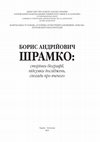
Борис Андрійович Шрамко: сторінки біографії, підсумки досліджень, спогади про вченого / відп. ред. С. Посохов. – Харків – Котельва: ХНУ імені В. Н. Каразіна; Майдан., 2021
The article analyzes the scientific heritage of Borys Shramko which devoted to the study and reco... more The article analyzes the scientific heritage of Borys Shramko which devoted to the study and reconstruction of religious and mythological beliefs of the population of the Forest-steppe Scythia settlements. At the center of his studies were sacred buildings and their accompanying materials, which were discovered during excavations. Borys Shramko paid special attention to the study of small clay sculpture. He was the first to develop a typology of these votive objects and provide an analysis of their
cult significance. The scholar widely used archaeological parallels, comparative religious material, Ossetian ethnography and interdisciplinary approach in his works. The questions brought up by Borys Shramko in the field of religious and mythological tradition are still not exhausted and remain promising for further study.
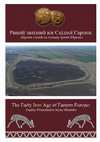
Ранній залізний вік Східної Європи: збірник статей на пошану Ірини Шрамко / Ред. С. А. Скорий, С. А. Задніков. – Харків – Котельва: ХНУ імені В. Н. Каразіна; ІКЗ «Більськ» , 2021
The article undertakes a comprehensive analysis of Indo-Iranian ritual bowls for libation accordi... more The article undertakes a comprehensive analysis of Indo-Iranian ritual bowls for libation according to the written Indo-Iranian tradition (Avesta, Rigveda). Visperad 10.2 (= 11.18) calls the libation bowl tašta and it is the haoma bowl (Videvdat 14.8; Yasna 10.17). This bowl attributes the priests (and Zarathushtra) (Videvdat 14.8; 19.9). The tašta-bowl was made of various materials (Videvdat 7.73–75), while Yasna 10.17 allows silver and gold bowls in the ritual of haoma preparing. The etymology of tašta (‘hewn’) indicates that it was originally made of wood. In the modern practice of the Zoroastrians, ritual bowls are made of metal, and the name tašta itself has been transferred to another type of vessels (saucer). In the Indian tradition, a number of names of wooden ritual dishes associated with the cult of soma have been preserved (camasâ-, camū-, âmatra-, dhisânâ-, drôna-, dru-, vana-, pātrā-, kalâsa-, kośa-, sadʰástʰa-). The Indian camasâ, the first bowl created by the god Tvashtar (RV I.20.6), can be compared with the Iranian tašta. Of the entire spectrum of bowls mentioned by ancient authors, only the golden φιάλην among the Scythians (Herod., Hist., IV.5.3; 10.1.3; 71.4) can claim the role of a libation bowls in the ritual. Material analogies for this type of ritual utensils in the archaeological cultures of the Eurasian steppes of the Paleometal Age can be called wooden bowls with metal side plates, known in the Northern Black Sea region since the Bronze Age (Timber Grave Culture). The presence of such vessels in the burials of the Iranian-speaking nomads of the Early Iron Age suggests that the boundaries between the priestly and warrior classes were leveling.

Vostok (Oriens). Afro-Aziatskie obshchestva: istoriia i sovremennost, 2020
The article is devoted to clarifying the meaning of the compounds ərəzatō.frašnəm and zaraniiō.vā... more The article is devoted to clarifying the meaning of the compounds ərəzatō.frašnəm and zaraniiō.vārəθman that are used in Yasht 10.112. They are hapax legomena for the Avestan lexicon corpus and contain as the first parts the name of the precious metals: ‘silver’ (ərəzata-) and ‘gold’ (zaraniia-). An unambiguous translation of these compounds does not exist. The most controversial is the translation of the second part of the first compound: frašna-/frasna-, in which the scholars see either a silver headdress or a silver weapon (spear or pike). In Iranian representations, Mithra embodied the sunshine and rays and was also associated with the transitions between night and day – sunrise and sunset (Yasht 6.5; 10.125, 142). In this regard, there are no sufficient grounds to discern in the ərəzatō.frašnəm and zaraniiō.vārəθmanəm compounds the military vocabulary. According to the authors, one should see in these epithets an indication of the color aspect of celestial body, which is expressed through comparison with ‘silver’ and ‘gold’. The arguments presented in the article give grounds to interpret the considered epithets of Mithra as designation of the radiance and brilliance of the sun and offer an understanding of his image as a deity having silver rays in the form of darts (Av. frašna-, Pehl. plš, *fraš) and surround/protection (aureole) made of a golden light. Based on this, authors offer translation for ərəzatō.frašnəm and zaraniiō.vārəθmanəm in Yasht 10.112 as ‘silver-darted, gold-surrounded’. Presumably, these qualities, reflected in the considered epithets, were visually embodied in the iconography of Mithra, where he is shown with a nimbus and pointed rays emanating from it, indicating its luminiferous emanations.

Eternal Sadness: Representations of Death in Visual Culture from Antiquity to the Present Time , edited by Luis Vives-Ferrándiz Sánchez. Monographic Issue, Eikón Imago, Vol. 10, 2021
This paper proposes the reconstruction of the Scythian eschatological concepts on the basis of se... more This paper proposes the reconstruction of the Scythian eschatological concepts on the basis of semantics of the Sakhnivka plate composition (4th century BC, Museum of Historical Treasures of Ukraine, branch of the National Museum of History of Ukraine). Taking into account the ritual detour of the sacral center from left to right in the Indo-Iranian tradition, the plate plots show a consecutive visual statement of the episodes of the myth of Kolaxais’ destiny. The culmination scene of the plate includes three figures. The half-turned and full-face iconography of the Goddess shows her belonging to two figures, on her both sides: to a meeting of the bearded Scythian king on the right and a scene with a young Scythian on the left (an image of the young, “regenerated” king / Kolaxais). Only the last figure has a in caftan wrapped from right to left, i.e. the clasp of the “living person” (as opposed to other figures) that confirms his special status of ‘reborn’. Accordingly, scenes show the important episodes of the Scythian eschatological representations connected with posthumous fate, basis for the ideology of funerary rites.
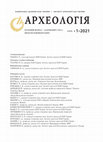
Arheologia, 2021
An overview and contextual-semantic analysis of the cases of usage the lexeme ‘gold’ (zaraniia-) ... more An overview and contextual-semantic analysis of the cases of usage the lexeme ‘gold’ (zaraniia-) and ‘silver’ (ərəzata-) in corpus of Avestan sources (Yasna, Yashts, Videvdat, Aogəmadaēca, etc.) are provided in the article. ‘Gold’ is used in the Avesta 101 times. ‘Silver’ — only 12 uses, while this metal is always contextually linked with gold. Silver has a semantic connection with the aquatic sphere. Gold is the material from which, according to the texts, the garments of several deities are made (Vayu, Aredvi Sura (partially)). Gold attributes or decorated with this metal tools have a number of gods and heroes (Yima, Mithra, Verethragna, Tishtria, Sraosha) are made completely or partially from it. In the myth of Yima, the divine instruments, the golden suβrā and gilded aštrā, are endowed with reproductive features and help to create the first kingdom (Videvdat 2.6—38). This ideal mythical world turns into the Afterworld. A set of semantic attributes show that gold is directly related to the Otherworld, where the souls of the righteous deceased receive gold places, golden or silver clothes (Videvdat 19.31—32; Aog. 12, 17). The fact that silver and other «colors» are added to gold may indicate the expansion of the spectrum of precious metals and their penetration into the sphere of funeral beliefs. In the treatise of Aogəmadaēca (84), silver-gold (a metaphor of wealth), along with cattle, horses and bravery, is included in the system of concepts related to the Thanatological worldview of the pre-Zoroastrian representations of ancient Iranian tribes.

Vestnik drevnei istorii / Вестник древней истории, 2021
A context-semantic analysis of the use of the word ‘silver’ (Av. ərəzata-) in Avestan texts is ca... more A context-semantic analysis of the use of the word ‘silver’ (Av. ərəzata-) in Avestan texts is carried out in the paper. There are 12 cases of its usage (Yasna 10.17; Yashts 5.129; 10.112, 125; 17.14; 19.67; Videvdat 7.75; 8.88; 14.11 (2); Aogemadaēca 17; 84). The analysis shows that the word ‘silver’ is used in several different semantic contexts, such as the ritual of Haoma (Yasna 10.17) and the purifying ceremony (Videvdat 7.75). Silver is associated with the concept of ‘brilliance’ and is represented in the descriptions of its various manifestations. The brilliance of silver is associated
with the idea of the sun rays manifesting themselves in the image of Mithra (Yasht 10.112), and of lunar splendour (Yasht 10.125). Beaver-skin robe of the goddess Arədvī Sūrā Anāhitā glistens like “silver (and) gold” (Yasht 5.129). The connection of silver with water is confirmed by its inclusion in Iranian hydronymics (Yasht 19.67). The combination “silver (and) gold” may be a metonymic designation for the concept of wealth (Yasht 5.129; 17.14; Aogemadaēca 84). The value of silver was lower than that of gold (Yasna 10.17; Yasht 10.125; Videvdat 7.74–75, 8.87–88; 14.11). Silver
is mentioned in the descriptions of the other world: the pantries of the righteous are filled with silver (Yasht 17.14), and the righteous deceased have silver clothes (Aogemadaēca 17).

Voprosy onomastiki / Problems of Onomastica, 2020
The article studies the names of two mythical fishes in the Avesta and their place in the ancient... more The article studies the names of two mythical fishes in the Avesta and their place in the ancient Iranian worldview. Each of the fishes in question is bestowed with a proper name and a constant epithet. The name of Vasi (Av. vāsī-) associates with the worship of the cosmogony elements. In Yasna 42.4, its epithet panchasadvar (Av. pancā.sadvarā-) means “that of fifty fins” or “that of fifty gates,” which presumably refers to the plates on the body of this mythical fish (similar to the Acipenser species). The description of the extraordinary size of Vaspanchasadvaran in Bundahishn (18.5–8) connotes its relation to the spatial worldview, which can functionally correspond to the image of a giant snake encircling the Universe. The name of the mythical Kara (Av. kara-) fish admits several etymologies, but it is highly probable that *kara- is a Uralic loan word from an early period of contacts between Indo-Iranian and Finno-Ugric tribes. The epithet of Kara, upāpa- ‘the one near the water,’ apart from its literal meaning, may also point to its habitat at the source of Ardvisur in the Sea of Frahvkard. In Avestan sources, the Kara fish is connected to the concept of vision; it inhabits the waters of the Rangha river (Yashts 14.28–33; 16.7) located in the north (Videvdat 1.19) and thus suggests tanathological associations. In Yasht 14, Verethragna girds Zarathushtra with the abilities to see underwater like the Kara fish, in darkness like a stallion, and at a distance like a vulture. This symbolically refers to the motive of Zarathushtra’s obtaining omniscience over the three different spheres of the natural world: water, earth, and air. Pahlavi sources also keep to Kara’s particular sensitivity and, at the same time, endow it with expressive eschatological functions (Bundahishn 18.1–6; Menog-i hrad 62.28–29). These features of the Kara fish were not borrowed from the Aramaic-Babylonian mythological tradition, being a result of the development of Iranian eschatological ideas.

Stratum Plus, 2014
The image of a wild boar is a widespread motive in written and pictorial tradition of the Iranian... more The image of a wild boar is a widespread motive in written and pictorial tradition of the Iranian people of Antiquity. In the Young Avestan texts the boar is the steady embodiment of Verethragna (Yasht 14, 15 (2—8). The same refrain repeats in Yasht 10, 70 (3—9) and 127 (2—8). In Yasht 10, 70 parts of the animal's body correspond to metal, which can be the image of the blade weapon (dagger/karəta-). Connection of a boar with the military sphere is traced during the Sassanian period in the “Memorials of Zarer’s son” (45). In the Iranian art of that period, the royal boar hunting motive gets a special spreading, that points to communication of this animal with all-Iranian royal representation of hvarn (xvarənah-). In the art of the Iranophone nomads, the motive of a boar gained diff usion on a weapon decor (a sheath of short swords and gorytos), bowls, and also on the topic scenes of hunting and fi ght. Images of boar on such objects were a marker of the highest social status of their owners in military hierarchy of the nomadic aristocracy.
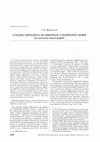
Archaeology and Early History of Ukraine. Vol. 33, No. 4. Pp. 340-347., 2019
The article analyzes the origins of the iconography of a woman’s face with a hairstyle that has c... more The article analyzes the origins of the iconography of a woman’s face with a hairstyle that has characteristic curls, which have been deployed in different directions, on the objects of Scythian material culture. This feature of iconography is fixed twice. The first case are four silver and gilded pendants from the barrow 34 near the village Sofiyivka, Kherson region (Museum of Historical Treasures of Ukraine — a branch of the National Museum of History of Ukraine, inv. no. 2755/1—4). The second case, is the image on the working part of a bronze stamp from the Kamyanskoe settlement (Archaeology Museum of the Karazin National University of Kharkiv, inv. no. VN 2089). As for the female hairstyle on these images, it is not typical for classical Hellenic art, but finds parallels in the art of the Eastern Mediterranean and Ancient East. This style is similar to the so-called «Hathoric wig» in the art of ancient Egypt (on stelae, sculptures, amulets, painting on coffins, mirrors, musical instruments, etc.), which influenced the iconography of the hairstyles of female deities («Oriental Aphrodite») of the Mediterranean. The image of the goddess in the «Hathoric wig» could permeate to the Northern Pontic Sea Region through the Hellenic craftsmen, as a replica of the image of «Oriental Aphrodite» cult of whom may have existed in the region. At the same time, these images could be a «copy» (imitation) made by the Scythian craftsmen directly from the Egyptian original, most likely from some faience amulet, which usually has similar size and sometimes reproduces the head of Hathor. According to Herodotus, in the Scythian pantheon, the figure of Celestial Aphrodite (Aphrodite Urania) was corresponded by Argimpasa (Herod. IV, 59). Consequently, in such an iconographic form these images could depict this goddess. The image of the «Hathoric wig» on these objects can be considered the most northern examples of this iconographic element.
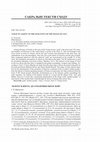
Shìdnij svìt, No. 2. Pp. 63-80., 2019
Among all types of metals in the texts of the Young Avesta, ‘gold’ is the most used. The maximal ... more Among all types of metals in the texts of the Young Avesta, ‘gold’ is the most used. The maximal number of references to this metal (forty) is given in the Yasht 15. This text belongs to the Great Yashts in terms of volume, and by the type is hymn, that dedicated to the deity Vayu, the embodiment of air and atmosphere, who also acts as the patron of warriors and the god of death. Nine compound adjectives with the subword ‘gold’ are concentrated in the strophe 57 of this Yasht, the translation and analysis of which are provided in the paper. The B7 manuscript is used for translation (Bombay University Library, Mumbai, 1813). The analysis of the image of Vayu in this text shows that this deity is equipped with golden assemblage, weapons and clothing. According to Yasht 15 Vayu offerings are made from the place that is always decorated with gold, by the most prominent Mythical heroes and Ahura Mazda himself. The image of Vayu attracts attention for the interpretation of the semantics of funerary vestments of the so-called “golden people” from the burials of Iranian-speaking nomads of Eurasia (in particular, the Saka aristocrat from the Issyk 4th BC burial mound). Basically, Scythologists see in the funerary golden assemblage the solar semantics, the relation to the Iranian concept of xvarənah and the image of the “sun” god Mithra. However, it looks like a promising interpretation of the image of the “golden people” of elite burials of the Scytho-Saka world through the prism of Iranian ideas about Vayu.
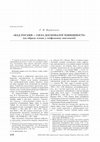
Археологія і давня історія України. Вип. 2 (27). С. 418–426. , 2018
The article deals with the problem of depicting hypertrophied horns of deer in the works o... more The article deals with the problem of depicting hypertrophied horns of deer in the works of Scythian art through the prism of Iranian representations of visualization of the military category of ama-power inherent in the Ancient Iranian military deity Verethragna. The Iranian name of a «deer» *gaṷaźna- is a compound and combines the stem *gau- «bull» and the stem *aźna-, formed from the verbal root * 1aź- «to drive, lead». This indicates the belonging of a deer and a bull to one class of animals in the world view of the Iranian peoples. Accordingly, in Scythian art, as in a language, the visual image of a deer probably served as the semantic equivalent of the image of a bull, given the insignificant prevalence of the latter’s images. Ac-cording to the Yasht 14 of the Young Avesta, the bull acts as one of the embodiments of the military deity Verethragna and in the text above the horns the ama-power is localized (Yt 14, 7). The analysis of the use of the term ama- in the Yasht 14 shows that this «power» is a feature inherent exclusively to the military deity and the worriers. The interpolation of these data to Scythian art (the formation of this text and the art of the animal style occurred synchronously) can explain the reason for the image of hypertrophied horns of a deer, which can in this case symbolize the ama-power that is located above the brow. Accordingly, works and objects with such images could have as their goal the allotment of their owners with this power and familiarization with the military deity.











Uploads
Books by Hanna Vertiienko
У монографії відтворено ідеологічну модель скіфського танатологічного міфу, що відповідає загальноіранському. З’ясовано природу базової міфологічної моделі Інобуття та есхатологічних уявлень щодо посмертної долі у світоглядній системі іраномовних номадів. На підставі здобутих результатів подано нову семантичну інтерпретацію низки витворів «елліно-скіфської» торевтики IV ст. до н. е., зокрема сахнівської пластини, пекторалі з Товстої Могили та інших.
Розраховано на істориків-сходознавців, релігієзнавців, культурологів, археологів, аспірантів гуманітарних спеціальностей та всіх, хто цікавиться історією та релігією кочового населення Євразійського степу.
Papers by Hanna Vertiienko
cult significance. The scholar widely used archaeological parallels, comparative religious material, Ossetian ethnography and interdisciplinary approach in his works. The questions brought up by Borys Shramko in the field of religious and mythological tradition are still not exhausted and remain promising for further study.
with the idea of the sun rays manifesting themselves in the image of Mithra (Yasht 10.112), and of lunar splendour (Yasht 10.125). Beaver-skin robe of the goddess Arədvī Sūrā Anāhitā glistens like “silver (and) gold” (Yasht 5.129). The connection of silver with water is confirmed by its inclusion in Iranian hydronymics (Yasht 19.67). The combination “silver (and) gold” may be a metonymic designation for the concept of wealth (Yasht 5.129; 17.14; Aogemadaēca 84). The value of silver was lower than that of gold (Yasna 10.17; Yasht 10.125; Videvdat 7.74–75, 8.87–88; 14.11). Silver
is mentioned in the descriptions of the other world: the pantries of the righteous are filled with silver (Yasht 17.14), and the righteous deceased have silver clothes (Aogemadaēca 17).
У монографії відтворено ідеологічну модель скіфського танатологічного міфу, що відповідає загальноіранському. З’ясовано природу базової міфологічної моделі Інобуття та есхатологічних уявлень щодо посмертної долі у світоглядній системі іраномовних номадів. На підставі здобутих результатів подано нову семантичну інтерпретацію низки витворів «елліно-скіфської» торевтики IV ст. до н. е., зокрема сахнівської пластини, пекторалі з Товстої Могили та інших.
Розраховано на істориків-сходознавців, релігієзнавців, культурологів, археологів, аспірантів гуманітарних спеціальностей та всіх, хто цікавиться історією та релігією кочового населення Євразійського степу.
cult significance. The scholar widely used archaeological parallels, comparative religious material, Ossetian ethnography and interdisciplinary approach in his works. The questions brought up by Borys Shramko in the field of religious and mythological tradition are still not exhausted and remain promising for further study.
with the idea of the sun rays manifesting themselves in the image of Mithra (Yasht 10.112), and of lunar splendour (Yasht 10.125). Beaver-skin robe of the goddess Arədvī Sūrā Anāhitā glistens like “silver (and) gold” (Yasht 5.129). The connection of silver with water is confirmed by its inclusion in Iranian hydronymics (Yasht 19.67). The combination “silver (and) gold” may be a metonymic designation for the concept of wealth (Yasht 5.129; 17.14; Aogemadaēca 84). The value of silver was lower than that of gold (Yasna 10.17; Yasht 10.125; Videvdat 7.74–75, 8.87–88; 14.11). Silver
is mentioned in the descriptions of the other world: the pantries of the righteous are filled with silver (Yasht 17.14), and the righteous deceased have silver clothes (Aogemadaēca 17).